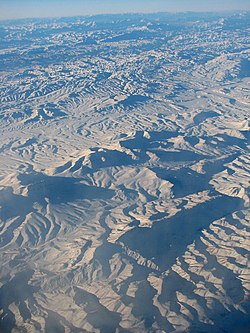| Central Makran Range | |
|---|---|
| Highest point | |
| Elevation | 3,000 m (9,800 ft) |
| Geography | |
| Location | Balochistan, Pakistan |
| Parent range | Makran region |
| Geology | |
| Rock age(s) | Formed by the collision of the northwestern Indian Plate and the Asian Plate |
| Mountain type | Mountain range |
| Rock type(s) | Primarily limestone and sandstone |


The Central Makran Range is a mountain range in the Makran region, in southwestern section of Balochistan Province, in southwestern Pakistan.
